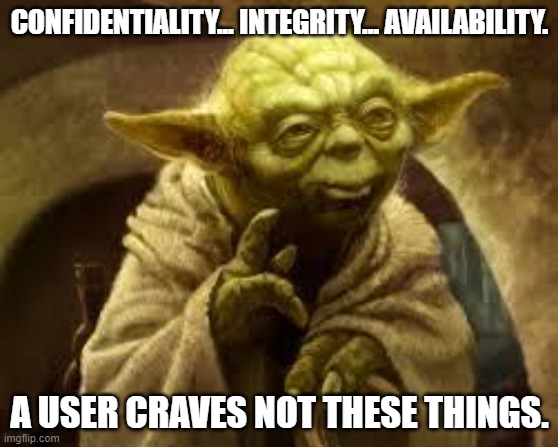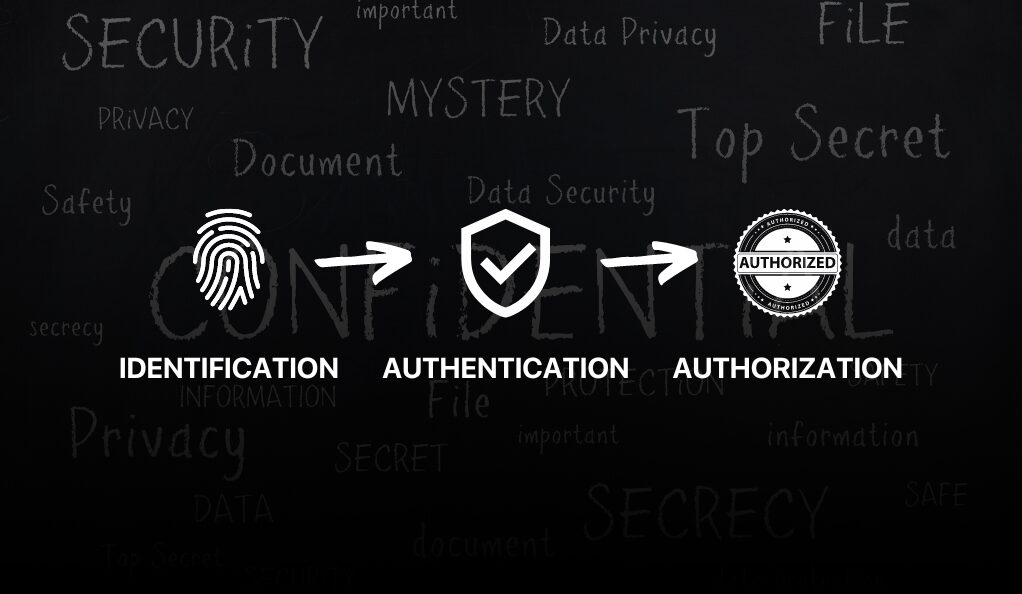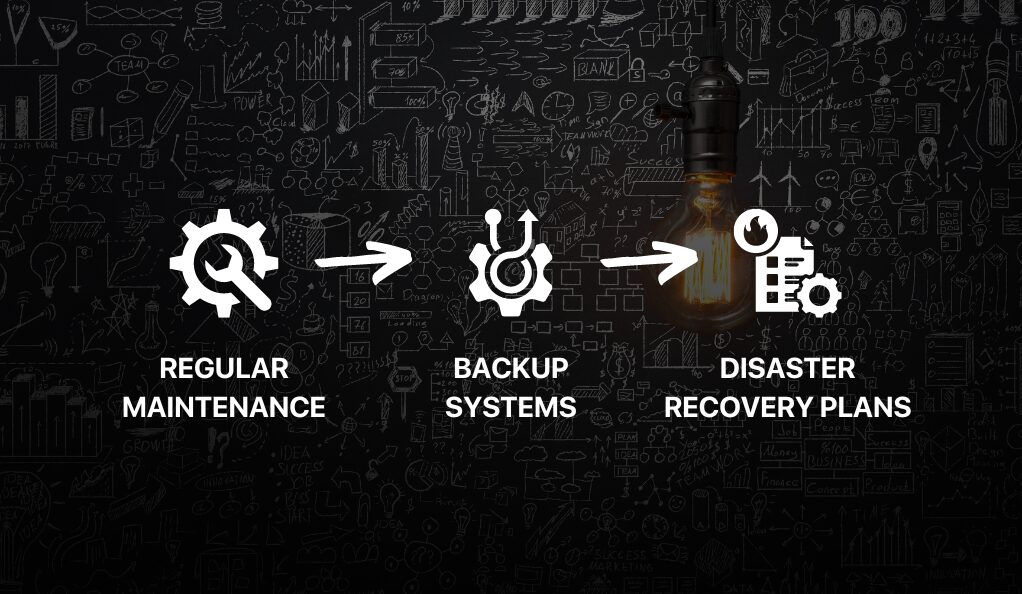Understanding the CIA Triad in Cybersecurity
In the world of cybersecurity, the CIA Triad stands as a cornerstone concept. It’s like a three-legged stool, each leg representing a crucial aspect of protecting online information. These three pillars are Confidentiality, Integrity, and Availability. Imagine a vault. Confidentiality is about who can open the vault, Integrity ensures that what you put inside stays the same, and Availability makes sure the vault is accessible when you need it. Together, they form a robust framework for keeping digital data safe and secure.
The Historical Evolution and Relevance of the CIA Triad
The CIA Triad didn’t just pop up overnight. It’s been around for a long time, evolving as our world became more digital. In the past, keeping information safe was about locks and keys, guards, and physical walls. But as we started storing information on computers and online, these old methods weren’t enough. We needed new ways to protect our digital treasures. That’s where the CIA Triad came in, offering a way to think about and manage security in this new, digital world. It’s stayed relevant because it’s adaptable, helping us face new challenges as technology grows and changes. In today’s world, where so much of our lives are online, understanding and using the CIA Triad is more important than ever.

The Basics of Confidentiality, Integrity, and Availability
Let’s break down these three big words into something simpler. Confidentiality is like keeping a secret; it’s all about making sure only the right people can see important information. Think of it like a locked diary that only you have the key to. Next, Integrity is about keeping information correct and unchanged – like making sure nobody can scribble in your diary without you knowing. Lastly, Availability is like having your diary ready to read whenever you need it. If it’s locked up in a safe all the time, it’s not much use, right? So, this part is about making sure you can get to your information when you need it, without hassle.
The Pillar of Confidentiality
Confidentiality in cybersecurity is a lot like keeping a personal diary under lock and key. It’s about ensuring that private information stays private. Just as you wouldn’t want everyone to read your personal thoughts in a diary, in the digital world, certain information needs to be kept away from prying eyes. This could be anything from your email conversations to your bank details.
Keeping Information Secret
The main goal of confidentiality is to prevent unauthorized access to your data. Here’s a simple way to think about it:
- Imagine: Your personal information is like a treasure.
- Challenge: You need to keep this treasure hidden from unwanted visitors.
- Solution: Use the right tools and methods to keep your treasure safe.
These tools and methods include things like passwords, encryption (a way of scrambling data so only certain people can read it), and access controls (like a VIP list for your data).
How Confidentiality Works
Confidentiality works through a series of steps to keep data protected:

- Identification: This is where the system recognizes who you are, usually through a username.
- Authentication: This is where the system checks if you are who you say you are, often with a password.
- Authorization: This decides what you can and cannot see or do within the system.
Think of it like entering a high-security building. First, you tell the guard who you are (identification), show your ID card (authentication), and then the guard lets you into certain rooms but not others (authorization).
The Importance of Confidentiality
Why is confidentiality so crucial? Well, imagine if your personal emails, medical records, or bank details got into the wrong hands. It could lead to all sorts of problems like identity theft, financial loss, or even personal safety issues. That’s why confidentiality is the first pillar of the CIA Triad – it’s all about keeping your digital life safe and sound.
The Role of Integrity in Cybersecurity
Integrity in cybersecurity is like making sure the words in your diary haven’t been changed without your knowledge. It’s not just about keeping information safe from being seen; it’s about protecting it from being altered. Integrity ensures that the data is accurate and reliable, just like you would want your diary entries to remain true to what you wrote.
Keeping Information Accurate and Unchanged
The focus of integrity in cybersecurity is to make sure information stays the way it is supposed to be. This involves:
- Preventing unauthorized changes: Making sure no one can alter your data without permission.
- Ensuring accuracy: Keeping your information correct and free from errors.
- Maintaining consistency: Making sure your data is the same no matter where and when you access it.
Imagine writing in your diary and knowing that no one can sneak in and change what you’ve written. That’s what integrity in cybersecurity aims to do for your digital data.
How Integrity is Maintained
Maintaining integrity involves a few key steps:
- Input Controls: This is like checking that what goes into your diary is correct. In digital terms, it means ensuring that the data entering the system is accurate and valid.
- Data Encryption: This is like writing your diary in a secret code. It helps keep data intact during transfer or storage.
- Regular Audits: This is like occasionally checking your diary to make sure all the entries are still correct. In the digital world, it means reviewing data and systems to ensure nothing has been altered improperly.
The Importance of Integrity
Integrity is vital because inaccurate or altered data can lead to wrong decisions, loss of trust, or even legal issues. Imagine if someone changed your diary entries and you started remembering things that never happened. In the digital world, altered data can have serious consequences, like incorrect medical records leading to wrong treatment. That’s why maintaining the integrity of information is a key part of cybersecurity.
Ensuring Availability in Cybersecurity
Availability in cybersecurity is like making sure you can always read your diary whenever you want. It’s about ensuring that the information and systems are accessible when needed. Just as you would be frustrated if you couldn’t open your diary when you needed to, in the digital world, it’s important that data and systems are always up and running for those who need them.
Making Information Accessible When Needed
Availability is all about:
- Easy Access: Making sure authorized people can quickly and easily get to the information they need.
- Reliable Systems: Ensuring that the systems storing the information are always working correctly.
- Quick Recovery: Being able to get systems back up and running fast if something goes wrong, like a power cut.
Think of it as having your diary in a place where you can always reach it, and if the lock breaks, you have a spare key.
Strategies for Ensuring Availability
To make sure availability is maintained, several strategies are used:

- Regular Maintenance: This is like checking your diary’s lock and pages to make sure they’re in good shape. In digital terms, it means keeping systems updated and running smoothly.
- Backup Systems: This is like having photocopies of your diary in case the original gets lost. In cybersecurity, it means having backups of data and systems.
- Disaster Recovery Plans: This is like having a plan for what to do if your diary gets stolen or damaged. In the digital world, this means having a plan to quickly restore systems and data after a problem.
The Importance of Availability
Availability is crucial because if data or systems are not accessible when needed, it can cause big problems. Imagine if you needed your diary to remember an important detail, but couldn’t open it. In the digital world, lack of availability can mean businesses can’t operate, people can’t access their bank accounts, or hospitals can’t get patient information. That’s why ensuring availability is a key part of keeping our digital world running smoothly.
The CIA Triad in Action
Understanding the CIA Triad is one thing, but seeing it in action is where it really shines. It’s like watching a superhero team work together, with each member playing a crucial role. In the world of cybersecurity, the CIA Triad helps businesses and individuals protect their digital information effectively.
Real-World Applications of the CIA Triad
In action, the CIA Triad looks like this:
- Confidentiality in Action: This is like a bank using secure passwords and encryption to keep your account information safe. Only you and authorized bank personnel can access your account details.
- Integrity in Action: Picture a hospital ensuring that patient records are accurate and unaltered. They use systems to prevent unauthorized changes, ensuring that doctors have the right information for treating patients.
- Availability in Action: Imagine an online store that always keeps its website running smoothly. They have backup systems and quick recovery plans, so customers can shop anytime without issues.
These examples show how the CIA Triad helps in everyday situations, keeping our digital world secure and functioning.
Balancing the Three Components
Balancing confidentiality, integrity, and availability is crucial, akin to juggling three balls simultaneously. The key is to find the right mix where strengthening one aspect doesn’t compromise the others. For instance, overly complex passwords may hinder availability. Adaptation to specific needs is essential, with priorities varying based on circumstances; a secret government agency may emphasize confidentiality, whereas a public library may prioritize availability.
Modern Challenges and Adaptations
In today’s fast-changing digital world, the CIA Triad faces new and complex challenges. As technology evolves, so do the threats to cybersecurity. It’s like a never-ending race where both the defenders and attackers are constantly upping their game.
Adapting to New Technologies
As new technologies emerge, the CIA Triad must adapt. Here’s what this looks like:
- Rise of Cloud Computing: With data stored online rather than on personal computers, ensuring confidentiality and integrity takes on new forms, like advanced encryption methods.
- IoT Devices: As more home devices connect to the internet, ensuring their security and availability becomes crucial. This might involve stronger network security measures.
- Artificial Intelligence: AI can help predict and prevent cyber threats, but it also poses new challenges in maintaining the integrity of the data it learns from.
These technological advancements require continuous adaptation of cybersecurity strategies to ensure the principles of the CIA Triad are upheld.
Facing Emerging Cyber Threats

With new technology come new threats. Here are some examples:
- Advanced Phishing Attacks: These attacks are becoming more sophisticated, making it harder to maintain confidentiality.
- Ransomware: This threat to availability locks users out of their own systems until a ransom is paid.
- Deepfakes: These challenge integrity by creating realistic but fake audio or video content..
The Future of CIA Triad in Cybersecurity
As we look ahead, the future of cybersecurity seems both exciting and challenging. The CIA Triad will continue to be a guiding star, but it will need to evolve and adapt to new realities. It’s like a tree that grows and changes with the seasons, always staying strong and vital.
Predictions for Cybersecurity Trends
Here are some predictions for how the CIA Triad might evolve:
- Greater Emphasis on Artificial Intelligence: AI will likely play a bigger role in detecting and responding to security threats, enhancing all three aspects of the CIA Triad.
- Increased Focus on Privacy: With more data breaches and concerns about personal data, confidentiality will become even more critical.
- Rising Need for Speed: As cyber-attacks become more sophisticated, the need for quick recovery (availability) will increase, requiring more efficient and faster response strategies.
These trends suggest a future where cybersecurity is more integrated, proactive, and responsive to emerging threats.
Adapting to the Changing Landscape
Adapting to this future will require:
- Continuous Learning: Just as technology evolves, so must our understanding and skills in cybersecurity.
- Collaboration Between Sectors: Sharing knowledge and strategies across different sectors can strengthen overall cybersecurity.
- Embracing New Technologies: Utilizing the latest technologies, like blockchain for integrity and cloud computing for availability, can help in maintaining robust cybersecurity.
Conclusion
The CIA Triad comprising Confidentiality, Integrity, and Availability remains a foundational framework in the realm of cybersecurity, akin to a robust shield safeguarding our digital lives against multifarious threats. As we’ve explored, each facet of the CIA Triad plays a distinctive and indispensable role in protecting information within the digital domain: Confidentiality safeguards personal and sensitive data, Integrity ensures data accuracy and reliability, while Availability guarantees timely data access.
As technology advances and cyber threats evolve, the CIA Triad will adapt to new challenges, but its core principles will always be essential for upholding a secure and trustworthy digital world. By grasping and applying these principles, we can collectively contribute to a safer and more secure digital environment.


Leave a Reply